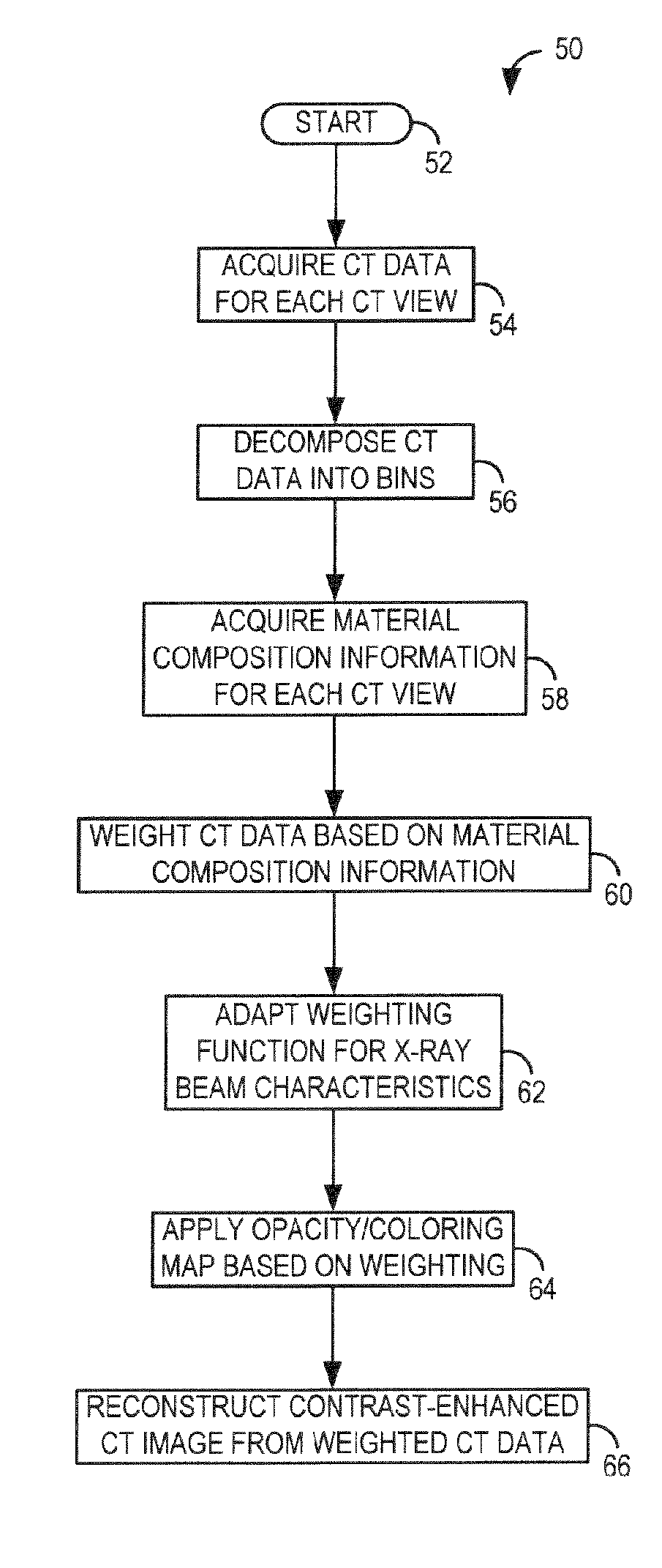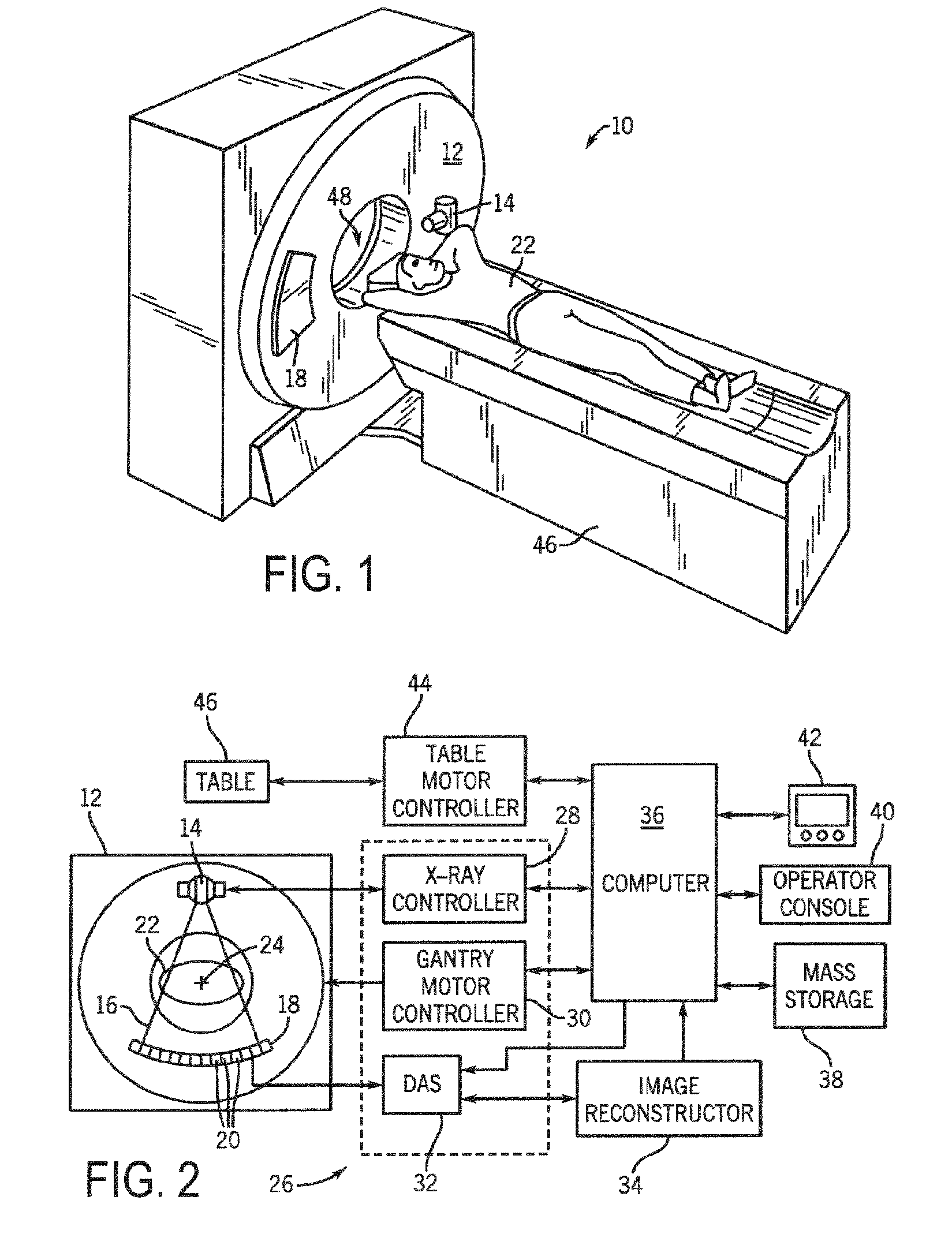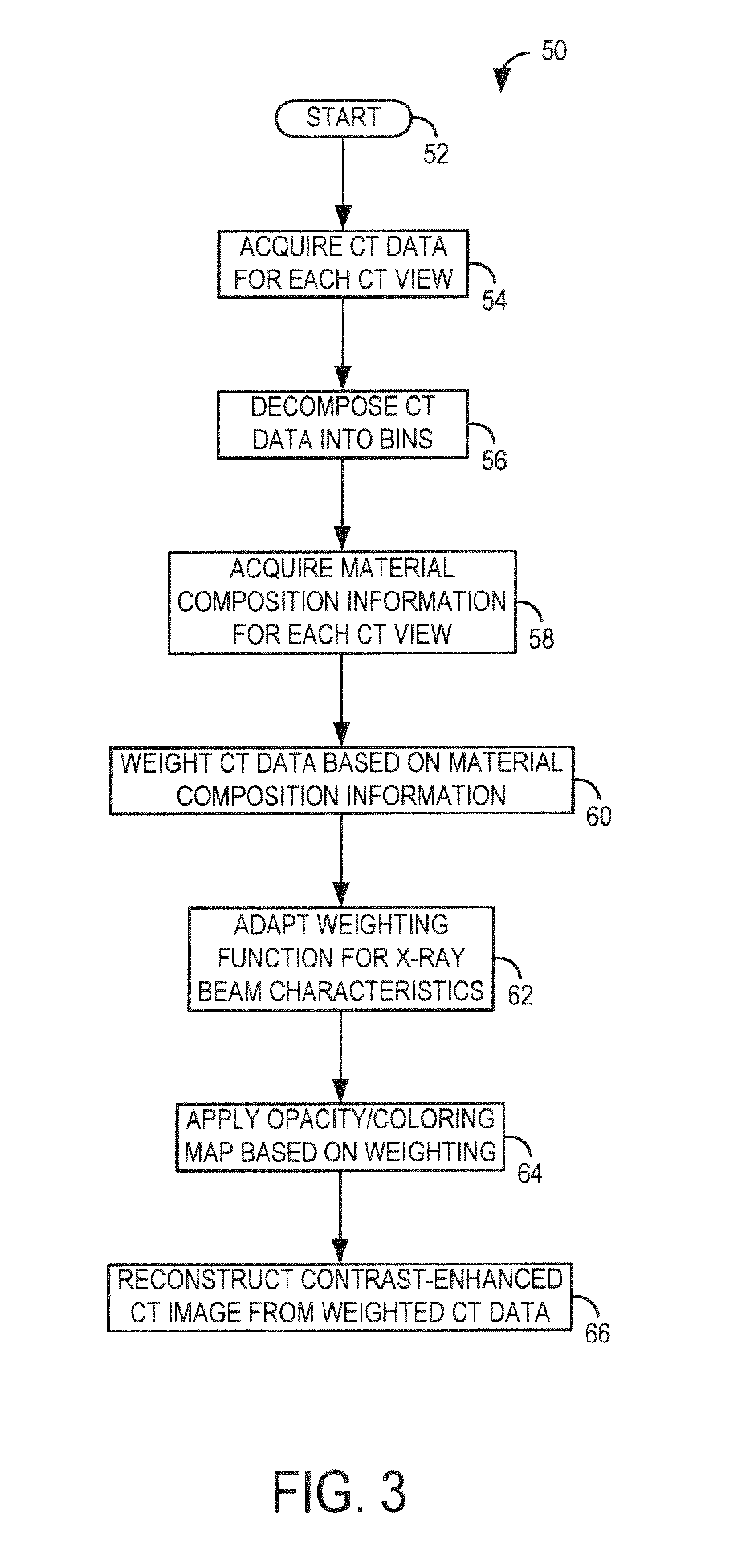System and method for acquisition and reconstruction of contrast-enhanced, artifact-reduced CT images
a technology of contrast enhancement and artifact reduction, applied in the field of radiographic imaging, can solve the problems of inability to provide independent data or feedback as to the energy and incident flux rate of photons, ct imaging would not be a viable diagnostic imaging tool, and inability to provide energy discriminatory data or otherwise count the number and/or measure the energy of photons actually received by a given detector elemen
- Summary
- Abstract
- Description
- Claims
- Application Information
AI Technical Summary
Benefits of technology
Problems solved by technology
Method used
Image
Examples
Embodiment Construction
[0046] The present invention provides a system and method of reconstructing contrast-enhanced CT images that are substantially free of beam-hardening artifacts. The present invention is applicable with a photon counting (PC) radiographic system having a radiation energy detector configured to detect radiation energy at a given flux rate and output signals indicative of the detected radiation energy. The present invention is also applicable with an integrating energy selective detector, where the received radiation is registered in two or more energy ranges that may overlap through the use of either direct or indirect conversion detector materials using a layered design or depth of interaction to differentiate the energy bins. The present invention is also applicable with an energy integration detector and an x-ray source modulated to adjust the spectra for two or more different energy functions.
[0047] Referring now to FIGS. 1 and 2, a computed tomography (CT) imaging system 10 is s...
PUM
 Login to View More
Login to View More Abstract
Description
Claims
Application Information
 Login to View More
Login to View More - R&D
- Intellectual Property
- Life Sciences
- Materials
- Tech Scout
- Unparalleled Data Quality
- Higher Quality Content
- 60% Fewer Hallucinations
Browse by: Latest US Patents, China's latest patents, Technical Efficacy Thesaurus, Application Domain, Technology Topic, Popular Technical Reports.
© 2025 PatSnap. All rights reserved.Legal|Privacy policy|Modern Slavery Act Transparency Statement|Sitemap|About US| Contact US: help@patsnap.com



